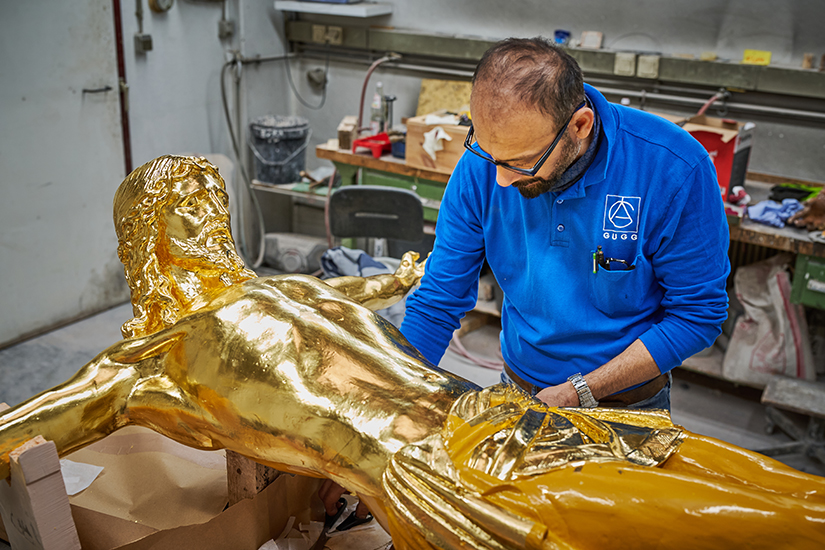Anton Gugg
Glocken & Kunstgießerei
Seit 1550
Das gelungene Zusammenspiel zwischen Künstler, Feuer, Metall,
qualifizierten Mitarbeitern und viel handwerklichem Geschick.
Die altbekannte Gugg Qualität
Namhafte Künstler vertrauen seit Generationen auf unsere Erfahrung und unser Können. Die Flexibilität, das handwerkliche Geschick und die Zuverlässigkeit unseres Hauses machen Gugg zum kompetenten Partner.
Unsere Aufgabe ist es mit dem Künstler ein wahres und unverfälschtes metallisches Ebenbild seines Modells zu schaffen. Dabei ist die Wahrung des Urheberrechts unser oberstes Gebot. Die altbekannte Gugg-Qualität und das technische Know-how machen nahezu jeden Kundenwunsch möglich.
- Bronze
- Aluminium
- Messing
- Tombak
- Zink
- Eisen
- Silber

